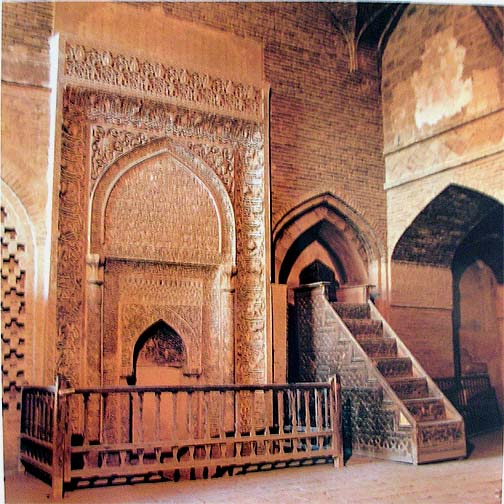

Item PL2
Dimensions: 48 x 24 cm. $35.00 This vintage print has some slight wear around the edges of the border due to age; this does not affect the actual image and will not be visible once the print is properly matted and framed.
The caption on the bottom of the print reads as follows:
The Mihrab of Oljaitu, Jameh Mosque, Isfahan
Stucco - the carving, moulding and painting of plaster - reached the height of its development in Iran during the Mongol period. Often disparaged for not providing sufficient resistance to the designer, allowing the creation of light fantasies without thoughtful planning. Its practice in Iran suggests both great discipline and imagination. The execution of a design is often far from easy. A foundation layer of wet plaster blocks out the major forms, and as it begins to harden the main figures and motifs are carved. Several layers may be applied for a particularly deep design, and when the plaster finally hardens it is cut and polished until a sharp focus is reached. Iran's astonishingly fast recovery from the Mongol invasion resulted in this example from the reign of Oljaitu (1304-1316), where the interplay of superb calligraphy and intricately rendered blossoms, leaves and tendrils suggest both exuberance and exquisite control.

